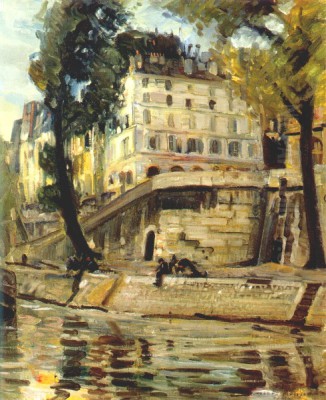
Joseph Kleitsch stands as a significant figure in the annals of American art, particularly celebrated for his contributions to the California Impressionist movement. A Hungarian-American painter whose life journey spanned continents and artistic evolution, Kleitsch possessed a remarkable ability to capture the essence of his surroundings with a vibrant palette and dynamic brushwork. His legacy is defined not only by his stunning canvases but also by his role as an educator and community builder within the burgeoning Southern California art scene of the early twentieth century. This exploration delves into the life, work, and enduring impact of an artist often hailed as a "Master of Color."
Early Life and European Foundations
Born Jószef Kleitsch on June 6, 1882, in Nemet Szent Mihaly, a village in the Banat region of what was then Hungary (now Sânmihaiu German, Romania), his artistic inclinations surfaced remarkably early. Recognizing his prodigious talent, his village reportedly sponsored his formal art education, a testament to his observable promise even as a youth. He began painting seriously around the age of seven, setting him on a path that would lead him through some of Europe's most important artistic centers.
His training commenced in Budapest, the vibrant capital of Hungary, where he absorbed the rich artistic traditions of Central Europe. Seeking broader horizons, he continued his studies in Munich, Germany, a major hub for academic and modernist art at the turn of the century. Here, he would have been exposed to various currents, from the established academic styles to the emerging Secession movements and early forms of Expressionism.
Paris, the undisputed center of the art world, was a crucial destination in his formative years. Immersing himself in the Parisian art scene, Kleitsch undoubtedly encountered the lingering influence of Impressionism and the burgeoning Post-Impressionist and Fauvist movements. Exposure to the works of masters like Claude Monet, Pierre-Auguste Renoir, and Edgar Degas, with their emphasis on light, color, and capturing fleeting moments, likely left an indelible mark on his developing aesthetic, even if his early career focused more on traditional portraiture.
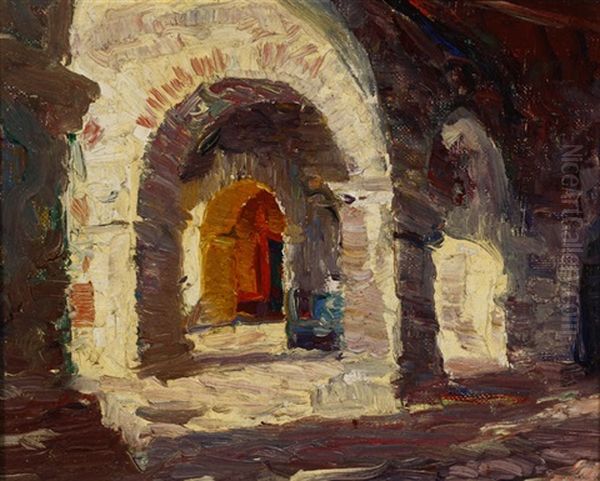
By the age of seventeen, Kleitsch had already established himself as a highly competent portrait painter. His skill was such that he received prestigious commissions, including, according to some accounts, painting a portrait of Emperor Franz Joseph I of Austria-Hungary. This early success underscored his technical mastery and his ability to capture a likeness with sensitivity, skills that would remain central throughout his career, even as his style evolved.
American Beginnings: Chicago and Beyond
Seeking new opportunities, Kleitsch eventually emigrated to the United States around 1901. Like many European artists of his generation, he was drawn by the promise and dynamism of America. He initially spent time in various locations, including Cincinnati and Denver, Colorado, where he settled for a period around 1905. His talent for portraiture continued to provide a livelihood and build his reputation in his new homeland.
A significant chapter in his American experience unfolded in Chicago. He became associated with the Art Institute of Chicago, a major center for art education and exhibition. While details of his formal enrollment might be debated, his connection to the institution is evident. He exhibited there, gaining recognition and winning a prestigious Gold Medal from the Art Institute in 1914. He was also involved with organizations like the Palette & Chisel Club, furthering his integration into the American art community. Chicago, with its own burgeoning art scene and collectors, provided a stimulating environment.
Kleitsch's travels also took him south of the border. Around 1912-1913, he spent a significant period in Mexico City. This visit coincided with a tumultuous period in Mexican history – the Mexican Revolution. Remarkably, during this time of political upheaval, Kleitsch secured commissions to paint portraits of President Francisco Madero and his family. This experience was not only a testament to his established reputation but also placed him at the nexus of significant historical events. His work from this period earned him a Gold Medal from the Mexican Art Association in 1912, further solidifying his credentials. The Mexican light and culture may also have subtly influenced his palette, perhaps prefiguring the vibrancy that would characterize his later California work.
Throughout these early American years, Kleitsch honed his craft, primarily as a portraitist, but his European training and innate sensitivity to color and light laid the groundwork for the stylistic transformation that awaited him on the West Coast. He was building a solid reputation, moving between major American cities and even venturing abroad, absorbing diverse influences along the way.
The California Dream: Arrival in Laguna Beach
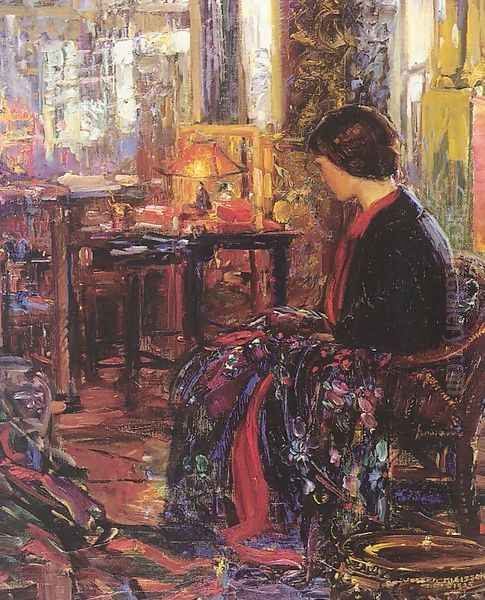
The year 1920 marked a pivotal moment in Joseph Kleitsch's life and art: his move to Southern California. He settled in Laguna Beach, a picturesque coastal village that was rapidly becoming a haven for artists. Drawn by the dramatic coastline, the unique quality of the light, and the congenial atmosphere, painters were establishing what would become one of the most important art colonies on the West Coast. Kleitsch arrived as an accomplished artist, ready to embrace this inspiring new environment.
Laguna Beach in the 1920s was a place of immense creative energy. Artists like Edgar Payne, William Wendt, Anna Hills, and Guy Rose had already been capturing the region's beauty, establishing the foundations of what is now known as California Impressionism. Kleitsch quickly integrated into this vibrant community, becoming an active member of the Laguna Beach Art Association (LBAA), which served as the social and professional heart of the colony. The LBAA provided exhibition opportunities and fostered a sense of camaraderie among the artists.
The move to California catalyzed a profound shift in Kleitsch's artistic focus. While he never abandoned portraiture, the landscape – the sun-drenched hills, the sparkling Pacific, the charming village streets, and the historic Spanish missions – became his primary muse. The intense, clear light of Southern California encouraged a brighter palette and a looser, more expressive brushstroke, pushing him fully into the Impressionist style he had likely admired in Europe.
He embraced the practice of plein air painting, working outdoors directly from nature to capture the fleeting effects of light and atmosphere. This approach was central to the Impressionist ethos and perfectly suited to the California environment. Kleitsch's European training provided him with a strong technical foundation, but the California landscape liberated his use of color and energized his compositions. He quickly became recognized as one of the leading figures in the Laguna Beach art colony.
The California Impressionist
Joseph Kleitsch is rightly considered one of the foremost painters of the California Impressionist movement. This regional adaptation of French Impressionism flourished in the early twentieth century, characterized by a focus on the unique landscapes of California, an emphasis on capturing natural light, and often featuring a vibrant, high-key palette. While sharing core tenets with their French predecessors, California Impressionists developed distinct regional characteristics.
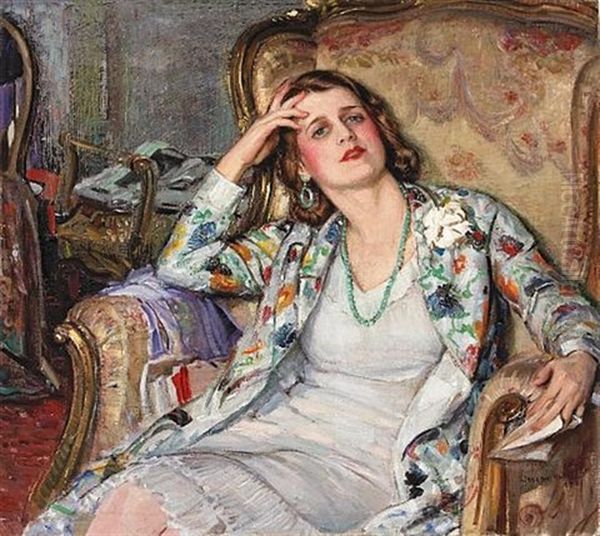
Kleitsch's contribution to this movement was marked by his exceptional skill as a colorist and his dynamic, often bold, brushwork. Unlike the sometimes more decorative or tranquil approaches of artists like Guy Rose or the Tonalist leanings of others, Kleitsch's work often possessed a vigorous energy and a directness in its application of paint. His canvases pulse with life, whether depicting sun-dappled eucalyptus groves, bustling street scenes, or the shimmering expanse of the Pacific Ocean.
His palette was notably rich and varied. He masterfully handled the intense sunlight of California, capturing both its brilliance and the deep, cool shadows it cast. He wasn't afraid to use strong, saturated colors, juxtaposing warm and cool tones to create effects of light and depth. This confident handling of color earned him the informal title "Master of Color" among his peers and later critics. His style, while clearly Impressionistic in its concern for light and atmosphere, retained a strong sense of structure and drawing, likely a legacy of his academic training.
Compared to his contemporaries, Kleitsch brought a unique perspective. While William Wendt focused on the structural grandeur of the landscape, often called the "Dean of Southern California painters," and Edgar Payne became known for his dramatic Sierra Nevada scenes and European harbor views, Kleitsch excelled at capturing the intimate charm of coastal villages, the play of light on architecture, and the human element within the landscape. He shared with Granville Redmond an interest in the vibrant wildflower fields, though Redmond's work often incorporated a Tonalist sensibility alongside Impressionism due to his deafness influencing his perception. Kleitsch’s work perhaps shows kinship with Alson S. Clark in its sophisticated compositions and cosmopolitan flair, reflecting their shared European experiences.
He was less focused on the purely decorative aspects sometimes seen in the work of artists like Franz Bischoff, known for his roses and later Arroyo Seco landscapes, and more invested in conveying the sensory experience of a place. His work stands out for its blend of European sophistication and a distinctly American, specifically Californian, vitality.
Master of Diverse Genres
While Kleitsch is most celebrated for his California landscapes, his artistic output was remarkably diverse, showcasing his mastery across several genres. He continued to excel in portraiture and still life, and his depictions of urban scenes and interiors add another dimension to his oeuvre.
Landscapes and Seascapes
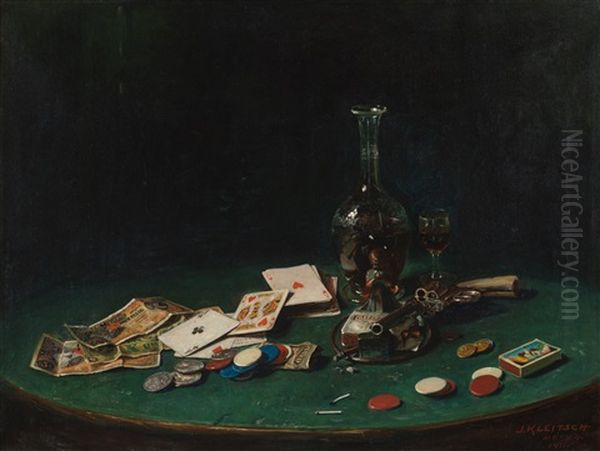
This is the genre most associated with Kleitsch's California period. He painted the Laguna Beach coastline repeatedly, capturing the coves, cliffs, and crashing waves under varying conditions of light and weather. His Laguna Beach series showcases his ability to render the brilliant Pacific blues and greens, the warm sandstone cliffs, and the distinctive coastal vegetation. He painted the rolling hills surrounding the town, often dotted with eucalyptus trees whose leaves shimmered in the sunlight.
Beyond the coast, Kleitsch was drawn to the historic Spanish missions of California. His paintings of Mission San Juan Capistrano, such as Mission Cloisters, San Juan Capistrano, are particularly noteworthy. He captured the romantic decay of the old adobe walls, the tranquil atmosphere of the courtyards, and the interplay of sunlight and shadow filtering through the arches and colonnades. These works evoke a sense of history and place, rendered with his characteristic vibrant color and fluid brushwork. He also painted other scenic locations throughout Southern California, documenting the region's natural beauty before widespread development.
Urban Scenes and Interiors
Kleitsch did not limit himself to purely natural landscapes. He was also a keen observer of village life and the burgeoning urban environment of Southern California. He painted street scenes in Laguna Beach, capturing the charm of its early architecture, the local inhabitants, and the general atmosphere of the growing art colony. Works like The Old Post Office provide valuable historical snapshots of the town.
His interior scenes are particularly compelling. The Jade Shop (also sometimes referred to as The Oriental Shop), painted around 1925, is one of his most famous works and achieved a record auction price for the artist. It depicts the interior of a shop filled with Asian artifacts, rendered in jewel-like colors and intricate detail, yet retaining an Impressionistic looseness. The painting demonstrates his skill in handling complex compositions, artificial light, and rich textures. These works often provide glimpses into the cultural life and tastes of the era, documenting the fascination with exotic goods and the interiors of homes and businesses. They showcase his versatility and his ability to find beauty and interest in everyday settings.
Portraiture
Throughout his career, portraiture remained a vital part of Kleitsch's practice. His California portraits continued the tradition of sensitive characterization seen in his earlier work but were often infused with the brighter palette and looser brushwork of his landscape style. He painted prominent members of the community, fellow artists, and family members.
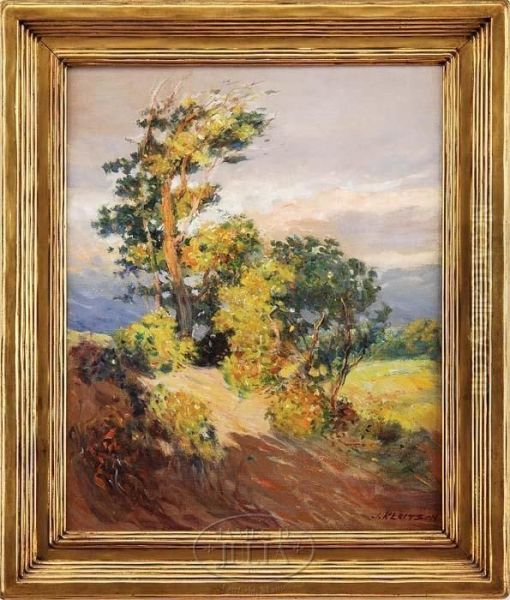
Works like Portrait of Ruth Lennick or the evocative The Jade Necklace demonstrate his ability to capture not just a physical likeness but also the personality and mood of the sitter. His portraits from the 1920s often reflect the spirit of the "Golden Twenties," depicting individuals with a certain style and confidence characteristic of the era. These works serve as important documents of the people who inhabited the world he painted, complementing his landscapes and genre scenes.
Still Life
Kleitsch also produced accomplished still life paintings. Though perhaps less numerous than his landscapes or portraits, these works demonstrate his technical skill and compositional sense. An earlier example, The Interrupted Hand (1911), uses objects on a table to create a symbolic arrangement, hinting at narrative possibilities. His later still lifes often featured flowers or arrangements of objects painted with the same vibrant color and attention to light that characterized his other California work, such as the aptly named Geraniums in Bloom (Laguna Beach). These works allowed him to explore color harmonies and textures on a more intimate scale.
Community Builder and Educator
Joseph Kleitsch was more than just a painter residing in Laguna Beach; he was an active participant and contributor to the artistic life of Southern California. His gregarious personality and established reputation made him a natural leader and mentor within the community.
His involvement with the Laguna Beach Art Association was significant. He served on committees and regularly exhibited in their gallery, contributing to the organization's success and visibility. The LBAA was crucial for artists, providing a venue to sell work and interact with patrons and peers, fostering the collaborative spirit of the art colony. Kleitsch's participation lent prestige to the association.
Recognizing the need for formal instruction, Kleitsch founded the Kleitsch Academy in Laguna Beach. This school offered training to aspiring artists, allowing Kleitsch to pass on his knowledge and techniques. While details about the academy's duration and scope are somewhat limited, its existence highlights his commitment to fostering artistic talent. Teaching provided him with an additional source of income but also allowed him to influence the next generation of painters in the region.
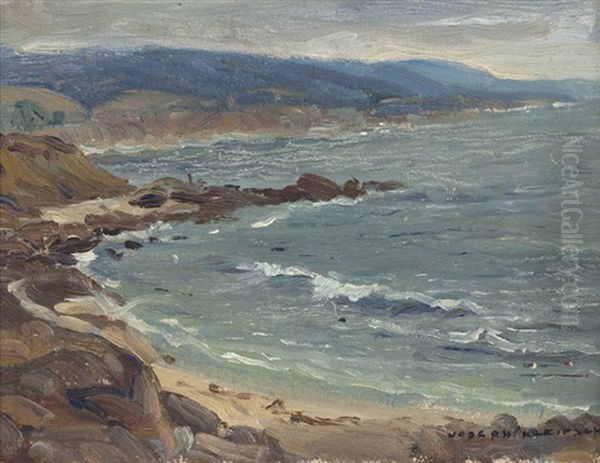
Beyond Laguna, Kleitsch maintained connections with the broader Los Angeles art scene. He exhibited frequently at the influential Stendahl Galleries in Los Angeles, a key venue that promoted California Impressionism and connected local artists with collectors. He was also reportedly involved in the founding of the Painters and Sculptors Club of Los Angeles, further demonstrating his commitment to building professional networks and advancing the status of artists in the region. His interactions with fellow artists like Edgar Payne, William Wendt, and others were likely mutually beneficial, involving shared painting excursions, critiques, and discussions about art.
Kleitsch's role extended beyond formal organizations. His studio likely served as a gathering place, and his success provided inspiration to other artists. By actively participating in exhibitions, teaching, and professional groups, he helped to solidify Laguna Beach's reputation as a major art center and contributed to the overall vitality of the Southern California art scene during a period of significant growth and development.
Recognition and Later Years
Throughout his career, Joseph Kleitsch received considerable recognition for his artistic achievements. His early Gold Medals from the Mexican Art Association (1912) and the Art Institute of Chicago (1914) attested to his skill even before his move to California. Once established in Laguna Beach, he continued to garner accolades, including a Grand Prize from the Laguna Beach Art Association.
His work was regularly featured in major exhibitions on the West Coast and occasionally further afield. The Stendahl Galleries remained a primary venue, but his paintings were also included in group shows at museums and other art institutions. Critical reviews from the period generally praised his vibrant color, technical facility, and the appealing nature of his subjects. He was acknowledged as a leading figure among the California Impressionists during his lifetime.
Kleitsch maintained connections with Europe, reportedly making trips back later in his life. These travels allowed him to reconnect with European art currents and perhaps refresh his artistic vision, though his primary focus remained the California landscape that had so inspired him. He continued to paint prolifically throughout the 1920s, producing many of his most iconic works during this decade.
Tragically, Joseph Kleitsch's vibrant career was cut short. He died suddenly of a heart attack on November 16, 1931, in Santa Ana, California, while attending to business matters related to his property. He was only 49 years old. His premature death was a significant loss to the Southern California art community and American art in general.
Following his death, his wife, Edna Gregatis Kleitsch (whom he had married in Chicago), managed his estate and sought to promote his work. She operated a gallery for a time, showcasing his paintings. However, she faced financial difficulties and passed away in 1950. Despite the challenges faced by his estate, Kleitsch's artistic reputation endured.
Legacy and Historical Significance
Joseph Kleitsch left behind a rich and enduring legacy. He is firmly established as one of the most important figures of the California Impressionist movement, celebrated for his distinctive style, particularly his mastery of color and light. His work embodies the optimism and visual splendor associated with Southern California in the early twentieth century.
His paintings serve as invaluable historical documents, capturing the landscapes, architecture, and social milieu of places like Laguna Beach and Los Angeles during a period of rapid transformation. His depictions of the coastline before extensive development, the charm of early village life, and the interiors of homes and shops offer a window into a bygone era. Works like The Jade Shop not only showcase artistic skill but also reflect the cultural interests of the time.
Kleitsch's influence extended through his teaching at the Kleitsch Academy and his active role in art organizations like the LBAA and the Painters and Sculptors Club. He helped to shape the character of the Laguna Beach art colony and contributed to the professionalization of the arts in Southern California. He served as an inspiration to his contemporaries and students through his technical brilliance and artistic vision.
In the decades following his death, Kleitsch's work, along with that of other California Impressionists, experienced periods of varying critical attention. However, beginning in the late twentieth century, there has been a significant resurgence of interest in California Impressionism. Kleitsch's paintings are now highly sought after by collectors, commanding substantial prices at auction, as evidenced by the record sale of The Jade Shop.
His works are held in the permanent collections of numerous important institutions, including the Pasadena Museum of California Art, the Irvine Museum Collection at the University of California, Irvine, the Orange County Museum of Art, the Laguna Art Museum, and others. Exhibitions dedicated to his work or featuring him prominently continue to be organized, reaffirming his status in American art history.
Joseph Kleitsch represents a fascinating synthesis of European training and American experience. He brought a sophisticated understanding of color and composition, honed in the art centers of Europe, to the unique environment of California. There, he forged a vibrant, personal style that captured the brilliant light and burgeoning culture of the region. His legacy lies in his beautiful canvases, which continue to delight viewers with their energy and color, and in his significant contribution to the development of a distinct and enduring regional school of American Impressionism. He remains a pivotal figure, a "Master of Color" whose brush captured the fleeting magic of the California dream.